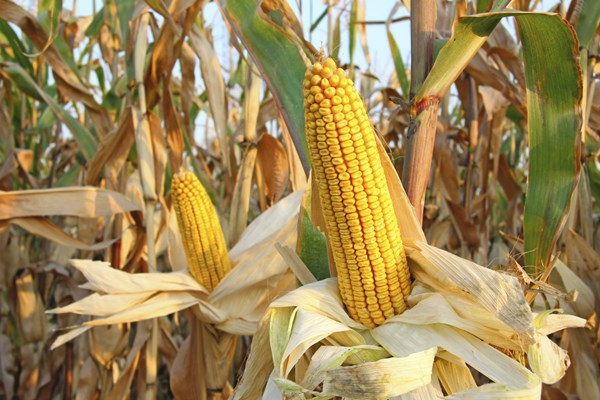 Credit: Thinkstock Horses are particularly sensitive to feed-borne fumonisin, which can cause mortalities due to equine leukoencephalomalacia. This brain disease is also more commonly known as “moldy corn poisoning.”
Credit: Thinkstock Horses are particularly sensitive to feed-borne fumonisin, which can cause mortalities due to equine leukoencephalomalacia. This brain disease is also more commonly known as “moldy corn poisoning.”Mycotoxins are toxic metabolites produced by molds (fungi). Our understanding of the economic significance of feed-borne mycotoxins has often paralleled advances in analytical methodology used for measuring mycotoxin levels on feedstuffs.
Aflatoxin is a mycotoxin produced mainly by the molds Aspergillus flavus and Aspergillus parasiticus, which are generally considered to be tropical or semi-tropical fungi thriving under conditions of high temperature and humidity. Four chemical forms of aflatoxin can be measured simultaneously by many commercial laboratories. Horses, like many other species, are very sensitive to feed-borne aflatoxins. Aflatoxins mainly target the liver, causing necrosis and potentially cancer.
More common on a global basis, however, are several hundred identified Fusarium mycotoxins. The study of Fusarium mycotoxicoses is considerably more complex than the study of aflatoxicosis. Fusarium fungi thrive in soils from areas with temperate climates including North America, much of Europe and Asia and South America. The most common Fusarium mycotoxins include DON (also known by the chemical name deoxynivalenol or the common name vomitoxin), zearalenone, fumonisin and fusaric acid.
The feeding of blends of grains naturally contaminated with Fusarium mycotoxins, largely DON, has been reported to cause reduced concentrate consumption by sedentary mares with some evidence of liver damage also detected. Imposition of an exercise regime, however, resulted in increased concentrate consumption, but weight loss then also was seen.
Horses are particularly sensitive to feed-borne fumonisin, which can cause mortalities due to equine leukoencephalomalacia. This brain disease is also more commonly known as “moldy corn poisoning.”
The most significant current controversy regarding feed-borne mycotoxins is the concept of conjugated or “masked” mycotoxins. These are mycotoxins that are produced by molds on feedstuffs pre-harvest, then chemically modified by the plants invaded by the molds. These modified mycotoxins are thought to be toxic, but non-detectable by analytical techniques currently used by most commercial laboratories. Utilizing research methods, scientists are actively studying these compounds in order to understand their importance.
It appears that the frequency of mycotoxin contamination of feedstuffs is increasing. This may be due, in part, to unfavorable growing conditions caused by extreme weather. In North America, 2012 was a year of significant drought in corn-growing regions. The levels of fumonisin contamination were unusually high and fumonisin was detected in significant quantities in corn grown in regions where fumonisin contamination has been rare in the past.
Improved analytical techniques for mycotoxin detection are needed to minimize exposure of horses to contaminated feeds and forages in the future.
This article was written for the University of Kentucky Gluck Equine Center’s Equine Disease Quarterly by Dr. Trevor K. Smith of the Department of Animal and Poultry Science University of Guelph Guelph, Ontario, Canad. The Equine Disease Quarterly is funded by underwriters at Lloyd’s London brokers and their Kentucky agents.


